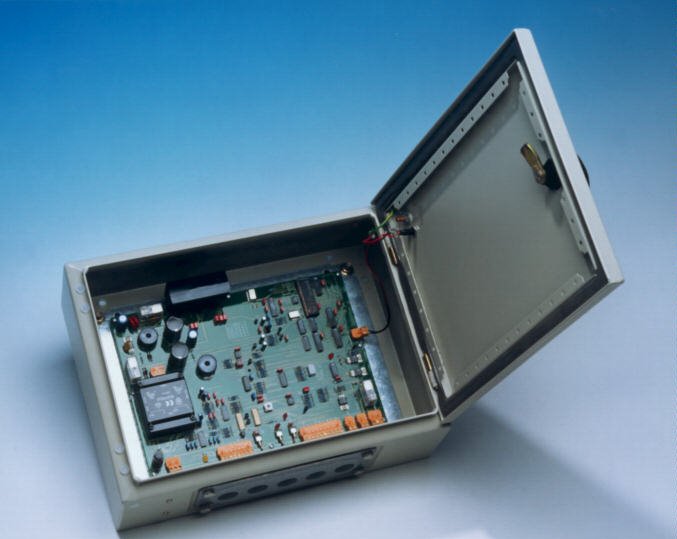1. The introduction and history
The industrial metal detector is based on the electromagnetic field theory whose developer is the Scottish physicist James Clerk Maxwell (1831–1879).
Maxwell graduated from Cambridge University in 1854 and worked as a teacher in both Marischal College in Scotland and King’s College in London. In 1871 he was invited back to Cambridge University as a professor of Experimental Physics. Studies of the electric and magnetic phenomenon were close to his heart and he never stopped following that passion, continuing his research throughout his life.
As a result of this passion and dedication, one of the most important theories in the history of physics was born: Maxwell’s Electromagnetic Field Theory. The first version of the theory Maxwell introduced in 1864 in his article “A dynamic theory of the electromagnetic field” and later on in 1873 in the book “Treatise on Electricity and Magnetism”. Because modern vector mathematics was not in use at that time, Maxwell introduced his theory in differential form by using a total of 20 different equations.
The Treatise was rather abstract to the physicists at that time and there were only a few who understood it, including Heinrich Hertz and Oliver Heaviside, who continued Maxwell’s work. Heaviside made a huge effort to simplify the theory and today it can be expressed, by using vector fields, in only four equations. Maxwell’s equations describe all phenomena in classical electromagnetism and are the basis for a multitude of applications in today’s technologies such as in electric motors, radio communication and metal detectors. As Nobel Prize winning physicist Richard Feynman said: “The discovery of the Maxwell equations was the most important event for the development of mankind in the 1800s”. When the British magazine Physics World in 2004 asked its readers to choose the world’s most impactful equation, the winner was Maxwell who left far behind more commonly known equations like E=mc² and 1+1=2.
2. The structure of the industrial metal detector
The modern industrial metal detector (QDF102) includes a metal detector coil (transmitter coil + 2 receiver coils), transmitter/receiver-electronics (TR-unit) and an electronic unit.
Transmitter coil (T) generates a changing magnetic field around the transmitter coil. This primary magnetic field generates electric currents into the conductive particles. These electric currents are known as eddy currents and they generate a secondary magnetic field, which is measured by the receiver coils (R1) and (R2). The strength of the eddy currents depend on the conductivity and the size of the particle. The phenomenon is described by the Maxwell equations.
Pictures 1 and 2 demonstrate the principle of two different coil constructions for two different types of industrial metal detectors. A metal detector’s coils are constructed in such a way that the signal in the two receiver coils is equal in amplitude but opposite in polarity when all metal in the coil is positioned symmetrically. This means the signal from the metallic body of the coils is cancelled out. When metallic objects enter the magnetic field, they disrupt the flow of the signal, making it again “asymmetrical”, and will therefore be detected.

| Picture 1. Plate coil of a metal detector | Picture 2. Tunnel coil of a metal detector |
In the plate coils of an industrial metal detector the receiver coils (R1 and R2) are located symmetrically inside the transmitter coil (T) so that they are on the same plane just below the surface of the plate coil (Picture 1.). In the tunnel coils of an industrial metal detector they are located on both sides of the transmitter coil (Picture 2.).
The purpose of the metallic body of the industrial metal detector coil is to direct the primary magnetic field into an area around the coils where the coil should show sensitivity to the interfering metal objects. The coil has been “shielded” against such metallic objects which are outside the metallic body and outside the so-called metal free zone. This metal free zone is individual for each type of the industrial metal detector coil and described in detail in the datasheets of the respective coils.
A properly designed metal body will enable the coil to be installed in locations where there are several metal structures without them disrupting the function of the metal detector.
3. Transmitter and receiver unit for the industrial metal detector (TR-unit)
The TR-unit feeds the primary magnetic field generating electric current into the transmitter coil of the industrial metal detector and amplifies the differential signal from the receiver coils and feeds it into the electronic unit.
Picture 3. Shows the principle of the TR-unit.
4. The electronic unit of the industrial metal detector
The purpose of the electronic unit of industrial metal detectors is to handle the signals from the TR-unit and inform to the whole industrial process about the detected metal objects and signal to stop the production line in order to remove the detected metal object. In addition to this primary role, the electronic unit can collect historic performance data and make automated self-diagnoses of its operation and alert if it detects errors in the functional efficiency of the metal detector.
Electronic unit (QDF102) can control different kinds of metal detector coils. Because of the construction of the coils varies this impact how sensitive they are to detecting metal objects. The electronic unit has advanced sensitivity adjustments to find the right level of sensitivity for the metal detector coil and industrial process in question. Picture 4. shows the Electronic Unit.

For more information about the industrial metal detectors of Quality Devices Finland Oy, please refer to the datasheets on our website.

